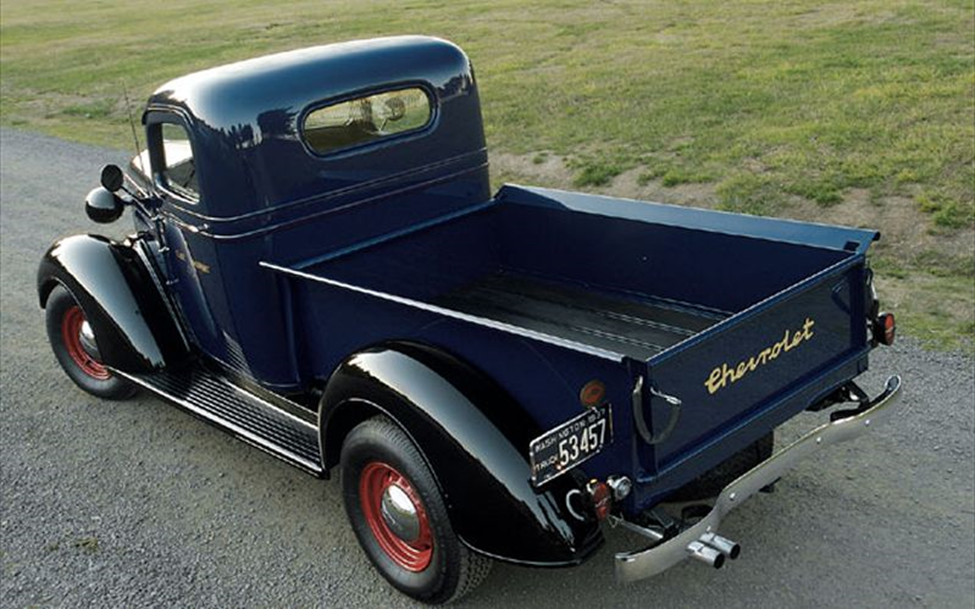Edition 1937 Chevy Truck
In the early years of the decade in 1930 passed the trucks to carry the front passenger vehicles last year. Only in 1934 the Chevy Trucks began presenting its own identity, with the application of some specific sheet metal, although many components were still interchangeable with passenger cars, such as the radiator grille. The design of the pickups had a resemblance to the Chevrolet family, but a major change was beginning to occur.
Hydraulic brakes arrived in the Chevrolet truck line in 1936 and the following year recorded another milestone, the end of the external radiator cap. The engine six-cylinder in-line gained new block, passing a cylinder capacity 3,548 cc (216.5 cubic inches), despite being two inches (50.8 mm) shorter than the original. The ceiling was slightly demeaning, leaving their more fluid lines.
Model 1937
A new front with a radiator grille designed specifically for the Chevy commercial line appeared in 1939, was composed of 17 horizontal chrome bars, providing a more robust visual models, getting the most delicate grid reserved for passenger cars only.
Outstanding as at that time the radiator grille was an important feature of style. Critical to identify the maker of the vehicles were restyled quite frequently, often being the only component of the car to be changed when updating a model.
The Chevy Truck was also produced in 1939 and for the first time, Chevrolet reached the annual sales volume of Ford in the segment. The new design of grid brought good winds for the model in 1940 sales reached almost 200,000 units, 20% more than the rival.
1941 Chevy Pick-up
The 1941 models brought important innovations as the new front (with new grille obviously included in the package) and new headlights passing to be mounted directly on fenders, new releases accompanied by a refreshed engine now delivered 90 hp ( 91.2 hp).
Very interesting as a historical record, the 1942 Chevy Black-Out brought the parts replacement for chrome black finish, produced from the Japanese attack on Pearl Harbor on December 7, 1941 release. The reason was to contain the use of the finest materials such as stainless steel, brass, nickel and chromium in any war effort. It is estimated that a total of 10,000 Black-Out Chevy pickup trucks were produced, stoking greed of collectors with original models of this period.
And the United States entered the war. Immediately vehicle production was halted. Cars, pickups, trucks, auto parts and components could not be manufactured in the U.S. territory of February 1942 to October 1945.
The U.S. government, through its Department of Production Management (Office of Production Management) froze not only the production but also prevented the delivery of new vehicles, even those already reserved their consumers.
President Roosevelt established the War Production Board (War Production Board) on January 16, 1942. The agency would regulate the production of war material and fuel distribution. Considered strategic materials such as metals, rubber and oil began to have tight control over its use and distribution.
It was, therefore, discontinuation of development of the automotive market in the United States, who still walked in their first decade of life. On February 22, 1942 the production of civilian vehicles stopped. The control of the U.S. government indicated an inventory of new vehicles (cars, light commercial vehicles and trucks) to be 520,000 units. Through control of sales, this would be the available volume during the war. To buy a new car through dealerships in Yankee ground network was necessary to present yourself as a user with special needs or essential, and a long and effective campaign gasoline rationing has gripped the American nation.



